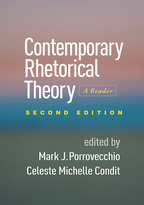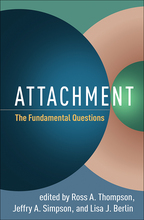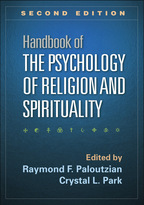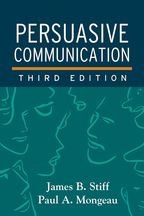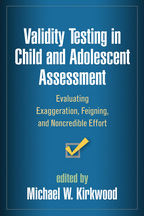Contemporary Rhetorical Theory
Second Edition
A Reader
Edited by Mark J. Porrovecchio and Celeste Michelle Condit

I. What Can a “Rhetoric” Be?
Toward a Sophistic Definition of Rhetoric, John Poulakos
Status, Marginality, and Rhetorical Theory, Robert Hariman
The Habitation of Rhetoric, Michael Leff
Text, Context, and the Fragmentation of Contemporary Culture, Michael Calvin McGee Practicing the Arts of Rhetoric: Tradition and Invention, Thomas Farrell
Beyond Persuasion: A Proposal for an Invitational Rhetoric, Sonja K. Foss & Cindy L. Griffin
Digital Rhetoric: Toward an Integrated Theory, James P. Zappen
II. Rhetoric and Epistemology
On Viewing Rhetoric as Epistemic, Robert L. Scott
Knowledge, Consensus, and Rhetorical Theory, Thomas Farrell
Rhetorical Perspectivism, Richard A. Cherwitz & James W. Hikins
Rhetoric and Its Double: Reflections of the Rhetorical Turn in the Human Sciences, Dilip Parameshwar Gaonkar
What Do You Mean, Rhetoric is Epistemic?, William D. Harpine
III. The Evolution of the Rhetorical Situation
The Rhetorical Situation, Lloyd F. Bitzer
The Myth of the Rhetorical Situation, Richard E. Vatz
Rethinking the Rhetorical Situation from within the Thematic of Différance, Barbara A. Biesecker
Unframing Models of Public Distribution: From Rhetorical Situation to Rhetorical Ecologies, Jenny Edbauer
IV. Perspectives on Publics
The Personal, Technical, and Public Spheres of Argument: A Speculative Inquiry in the Art of Public Deliberation, G. Thomas Goodnight
Narration as Human Communication Paradigm: The Case of Public Moral Argument, Walter R. Fisher
Crafting Virtue: The Rhetorical Construction of Public Morality, Celeste Michelle Condit
The Polis as Rhetorical Community, Carolyn R. Miller
Publics and Counterpublics (abbreviated version), Michael Warner
Public Identity and Collective Memory in U.S. Iconic Photography: The Image of “Accidental Napalm,” Robert Hariman & John Louis Lucaites
V. The Persistence of Persona(e) in Rhetorical Theory
The Second Persona, Edwin Black
The Third Persona: An Ideological Turn in Rhetorical Theory, Philip Wander
The Null Persona: Race and the Rhetoric of Silence in the Uprising of '34, Dana L. Cloud
Pink Herring and the Fourth Persona: J. Edgar Hoover's Sex Crime Panic, Charles E. Morris III
VI. Rhetoric and the Problems of Political Change
The Rhetoric of Women's Liberation: An Oxymoron, Karlyn Kohrs Campbell
The “Ideograph”: A Link Between Rhetoric and Ideology, Michael Calvin McGee
Constitutive Rhetoric: The Case of the Peuple Québécois, Maurice Charland
Critical Rhetoric: Theory and Praxis, Raymie E. McKerrow
Critical Rhetoric as Political Discourse, John M. Murphy
Imagining in the Public Sphere, Robert Asen
VII. Rhetoric and the Mass Media
Burke's Representative Anecdote as a Method in Media Criticism, Barry Brummett
The Rhetorical Limits of Polysemy, Celeste Michelle Condit
Pranking Rhetoric: “Culture Jamming” as Media Activism, Christine Harold
A Virtual Death and a Real Dilemma: Identity, Trust, and Community in Cyberspace, John W. Jordan
An Epideictic Dimension of Symbolic Violence in Disney’s Beauty and the Beast: Inter-Generational Lessons in Romanticizing and Tolerating Intimate Partner Violence, Kathryn M. Olson
VIII. Alternatives to the Rhetorical Tradition
Cultures of Discourse: Marxism and Rhetorical Theory, James Arnt Aune
Disciplining the Feminine, Carole Blair, Julie R. Brown, & Leslie A. Baxter
Postcolonial Interventions in the Rhetorical Canon: An “Other” View, Raka Shome
Refiguring Fantasy: Imagination and Its Decline in U.S. Rhetorical Studies, Joshua Gunn Pure Persuasion: A Case Study of Nüshu or “Women’s Script” Discourses, Lin-Lee Lee
Epilogue: Contributions from Rhetorical Theory, Mark J. Porrovecchio & Celeste Michelle Condit

